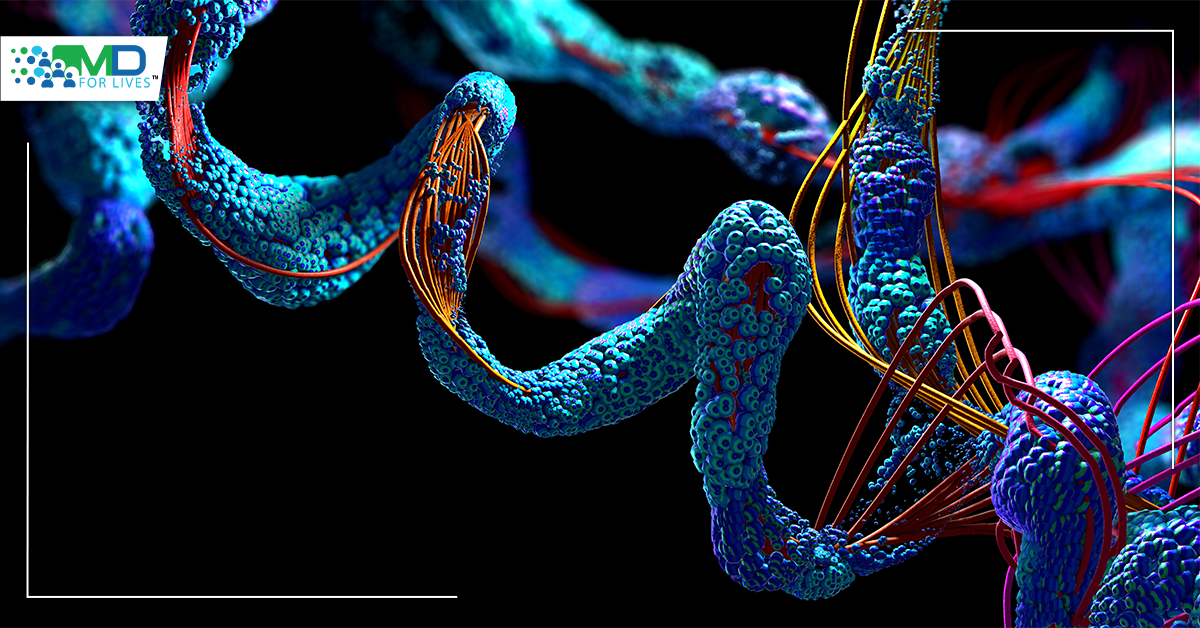Researchers have revealed that a human receptor protein can recognize specific amino acids in the same manner as bacteria can. The discovery may lead to improvements in drugs made from the amino acid GABA. This discovery opens the door to enhance the design of drugs that target a variety of neurological problems.
Human receptor protein
Cell membranes contain a slew of proteins that serve a variety of roles to keep a cell alive. Receptors are a type of protein that works by interacting with a certain ligand molecule. When a ligand attaches to its receptor, the receptor might alter conformation, transmitting a signal into the cell. Typically, these signals are chemical messengers that attach to a receptor and elicit a cellular/tissue response. The action of the receptor can be classified in three ways: signal relay, amplification, or integration. In signal relay, the signal is relayed, amplification amplifies the action of a single ligand, and integration permits the signal to be integrated into another metabolic pathway.
Amino acid synthesis steps
Amino acid synthesis can take place in a number of different ways. Amino acids, for example, can be made from precursor molecules in a few easy steps. After a transamination reaction, alanine, aspartate, and glutamate are produced from the keto acids pyruvate, oxaloacetate, and alpha-ketoglutarate, respectively. Similarly, an amidation reaction step is used to make asparagine and glutamine from aspartate and glutamate, respectively. Other amino acids require more steps in their synthesis; between one and thirteen biochemical reactions are required to synthesize the various amino acids from their central metabolism substrates.
Because distinct synthesis pathways have evolved to meet unique metabolic needs in different animals, the relative utilization of amino acid biosynthesis pathways varies greatly among species. Although some routes are found in some creatures, they are not found in others. As a result, data from experiments on amino acid metabolism obtained using model species may not always be applicable to the majority of other organisms.
Protein functions
Proteins are involved in nearly every biological action, including DNA replication and transcription, as well as the production, processing, and secretion of other proteins. Cell division, metabolism, and the flow of materials and information into and out of the cell are all controlled by them. Many of the functions of human proteins are unknown, but researchers at the University of Edinburgh’s Wellcome Centre for Cell Biology and the Technische Universität Berlin’s Institute of Biotechnology used large-scale quantitative proteomics and machine learning to create a protein covariation dataset of the human proteome. The data is utilized to create a co-regulation map that can be used to anticipate the function of unidentified human proteins.
Amino acid binding sensor shared by bacteria and humans:
A recent discovery
Amino acids are essential signaling molecules and the building blocks of life. Despite their similar structure, there was no universal method for amino acid identification by cellular receptors. Researchers have revealed that a human receptor protein can recognize specific amino acids in the same manner as bacteria can.
It was shown that a subtype of the ubiquitous extracellular sensory domain dCache 1 (double domain found in calcium channels and chemotaxis receptors, family 1) contains a simple motif that identifies the amino and carboxyl groups of amino acid ligands. This motif is found throughout the Tree of Life. This motif only binds amino acids in bacteria and archaea, including γ-aminobutyric acid (GABA), and it is found in all main receptor types. This motif has been detected in 2 subunits of voltage-gated calcium channels implicated in neuropathic pain and neurodevelopmental problems in humans, as well as in a newly identified CACHD1 protein. Natural GABA ligands bind to the same pattern in human α2δ-subunits that GABA-derived drugs bind to in bacterial chemoreceptors.
α2δ-Subunits are widely expressed in both the central and peripheral nervous systems in humans, and they have been linked to a variety of illnesses such as schizophrenia, bipolar disorder, autism spectrum disorders, epilepsies, and neuropathic pain. The GABA-derived drugs gabapentin, pregabalin, and mirogabalin bind to the α2δ-1– and α2δ-2–subunits and are used to treat neuropathic pain. GABA is a natural ligand for the dCache_1AA domains of various bacterial chemoreceptors, which is a coincidence. However, whether GABA-derived medicines bind to the dCache_1AA domain is uncertain, as is the specific placement of this domain in α2δ. The analysis in the research identified several hundred eukaryotic sequences with the AA_motif, including α2δ-subunits and the recently characterized CACHD1 proteins. The precise location of the target protein as well as the mechanism of binding may aid future medication development for pain and neurological diseases.

Thousands of receptors in bacteria, archaea, and eukaryotes have been assigned a unique biological function—amino acid sensing. Because amino acids are major mediators of pathogenicity in human infections, this is especially relevant. Similar methods can be used to annotate the functions of various types of sensor proteins. The AA_motif was discovered in therapeutically significant CACHD1 proteins and VGCC α2δ-subunits, and it was implicated as the binding site for GABA-derived medicines in human α2δ-subunits during this research. These findings may help to improve drugs that target a variety of neurological problems.





